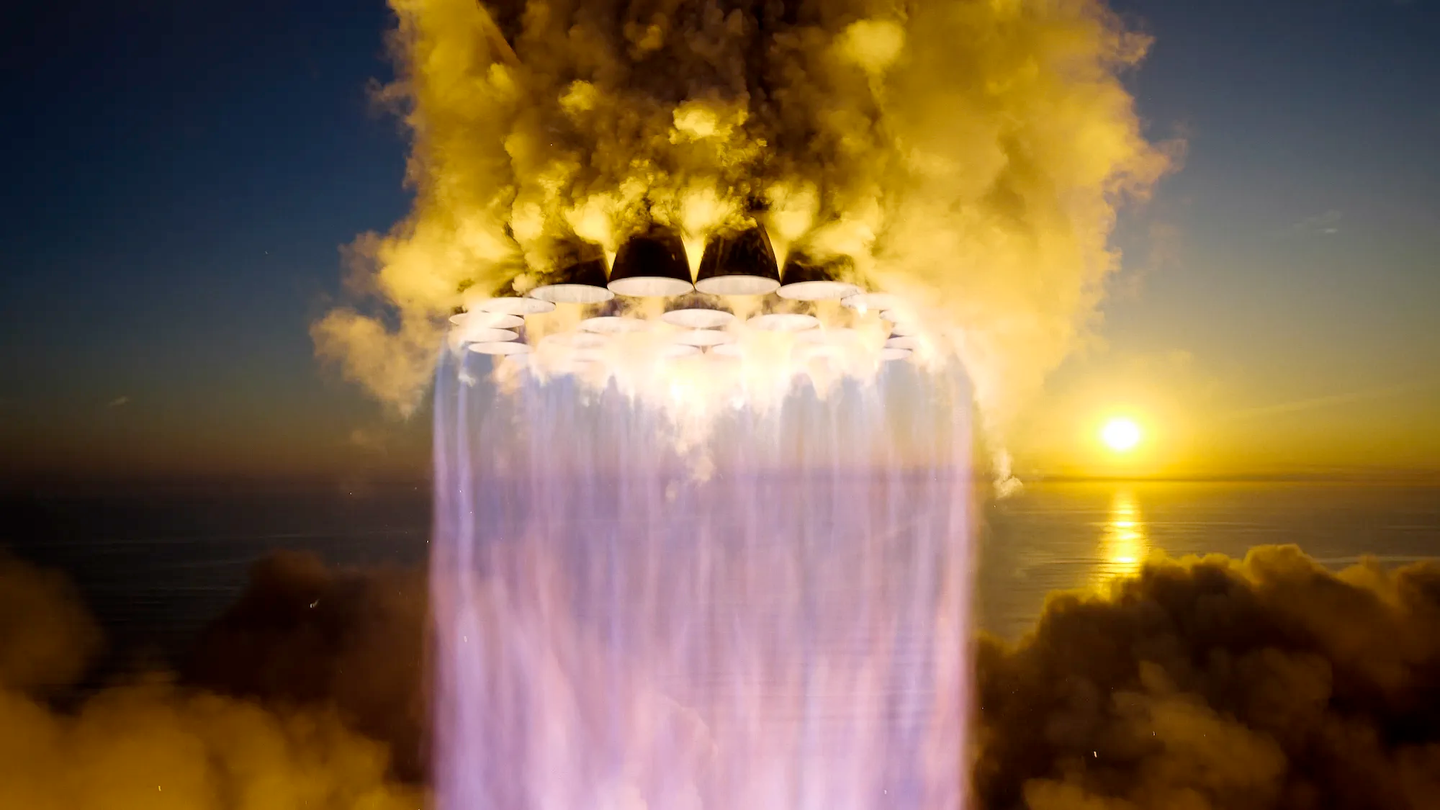Another SpaceX Starship blew up
The explosive finale did not come as a surprise to the company and the mission passed some major milestones.

SpaceX’s second, unpiloted Starship test flight of the year ended in yet another fiery inferno on November 18. This time, the sudden end arrived roughly 8 minutes into its 90-minute scheduled mission. But although its Super Heavy first stage booster suffered a fatal “rapid unscheduled disassembly” in the Caribbean, the world’s most powerful rocket almost doubled its previous lifespan and passed multiple other crucial milestones.
Starship launched once again from its test site near Boca Chica, Texas, at 8:03am ET on Saturday, with all 39 of the Super Heavy booster’s Raptor engines remaining lit during the mission—a first for the spacecraft intended to eventually deliver humans to Mars. At two minutes and 41 seconds following liftoff, Starship’s hot-staging sequence—in which upper stage engines ignite and separate from the booster—also proceeded successfully, clearing yet another hurdle for SpaceX engineers. The reusable booster then performed its flip maneuver en route towards an intended safe return back to Earth, but exploded only a few seconds later. The booster’s fate wasn’t a huge surprise, however, as SpaceX mission control operators already suspected such a dramatic event could occur due to the immense “load on top of the booster.”
Meanwhile, the Starship upper stage continued to soar for another few minutes to roughly 92 miles above the Earth’s surface—well above the Kármán Line, an internationally recognized demarcation between the planet’s atmosphere and outer space. Moments before its scheduled Second Engine Cut Off, or SECO, the upper stage met its own explosive demise. Space X representatives cited a delay in Starship’s automated flight termination system, but do not yet know the exact cause for its malfunction. If successful, Starship would have circumnavigated Earth before performing a hard landing near Hawaii.
The results of April’s Starship test received considerable criticism from both Boca Chica locals and the Federal Aviation Administration for surrounding environmental damage sustained during launch. Starship’s Raptor engines burn approximately 40,000 pounds of fuel per second to reach 17 million pounds of thrust. Nearby Texan residents described the blowback as resembling a “mini earthquake” at the time, with at least one business owner’s store window shattering. The April 20 test flight blasted a 25-feet deep crater, ejecting clouds of dirt, dust, and debris into the air while smashing a bowling ball-sized fragment into a nearby NASA Spaceflight van. Much of the area near Starship’s launch site includes protected ecosystems, as well as land considered sacred by local Indigenous communities. The FAA soon issued 63 corrective actions needed before SpaceX could legally attempt another Starship test.
[Related: SpaceX’s Starship launch caused a ‘mini earthquake’ and left a giant mess.]
Unlike SpaceX’s outing, Starship’s upgraded launch mount reportedly better mitigated the resulting blowback—at least according to Elon Musk’s company assessment. The FAA, meanwhile, wasted no time in issuing its own statement on Saturday’s event.
“A mishap occurred during the [SpaceX] Starship OFT-2 launch from Boca Chica, Texas, on Saturday, Nov. 18,” the administration posted to X over the weekend. Although no injuries or public property damage was reported this time, the FAA promised to oversee the “SpaceX-led mishap investigation” to ensure the company will comply with “regulatory requirements.”